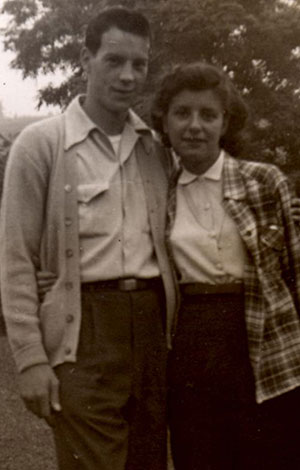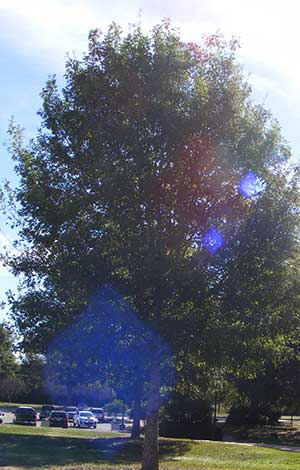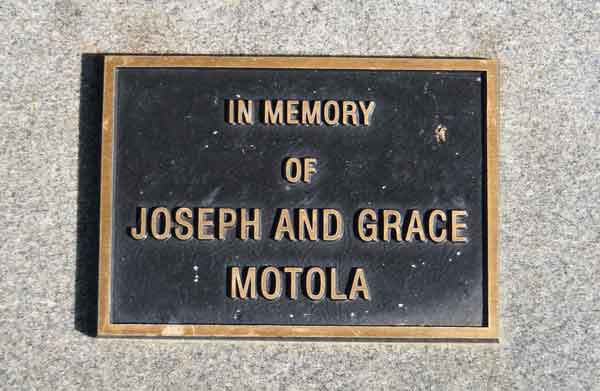For More Info...Joe and Grace Motola
 Joseph John and Grace (Orciola) Motola were the parents of Dr. Barbara Alford, who retired as President of Troy State University Dothan in 2005.
Joseph John and Grace (Orciola) Motola were the parents of Dr. Barbara Alford, who retired as President of Troy State University Dothan in 2005.
Joe and Grace were first generation Americans, both born in Brooklyn, NY in the 1920’s into large Italian-Irish families. Due to financial troubles faced by both the Orciola and Motola families in the 1940’s, neither Grace nor Joe completed high school. Both, however, instilled in their two children (Barbara and Patricia) a respect for education along with a strong work ethic and sense of personal responsibility.
Following his service in the Navy during WWII, Joe worked over 35 years in the U.S. Postal Service, retiring as Brooklyn Fleet Manager. Grace worked for 30 years as a school aid in Public School 215. They bought their first house in 1957 with a $2000 loan from an Uncle, whom they repaid in five years. They lived in that house for over 40 years before retiring to Florida—where Joe could keep on fishing and Grace would continue being loved and adored by every new friend and neighbor they encountered.
NUTTALL OAK
 “Nuttall oak (Quercus nuttallii), not distinguished as a species until 1927, is also called red oak, Red River oak, and pin oak. It is one of the few commercially important species found on poorly drained clay flats and low bottoms of the Gulf Coastal Plain and north in the Mississippi and Red River Valleys. The acorn or winter buds identify Nuttall oak, easily confused with pin oak (Q. palustris). The lumber is often cut and sold as red oak. In addition to producing timber, Nuttall oak is an important species for wildlife management because of heavy annual mast production.” [Source - http://www.na.fs.fed.us/pubs/silvics_manual/volume_2/quercus/nutallii.htm]
“Nuttall oak (Quercus nuttallii), not distinguished as a species until 1927, is also called red oak, Red River oak, and pin oak. It is one of the few commercially important species found on poorly drained clay flats and low bottoms of the Gulf Coastal Plain and north in the Mississippi and Red River Valleys. The acorn or winter buds identify Nuttall oak, easily confused with pin oak (Q. palustris). The lumber is often cut and sold as red oak. In addition to producing timber, Nuttall oak is an important species for wildlife management because of heavy annual mast production.” [Source - http://www.na.fs.fed.us/pubs/silvics_manual/volume_2/quercus/nutallii.htm]
GENERAL INFORMATION ABOUT OAKS
“The term oak can be used as part of the common name of any of about 400 species of oak trees and shrubs in the genus Quercus (from Latin "oak tree). The genus quercus is native to the northern hemisphere, and includes deciduous and evergreen species extending from cold latitudes to tropical Asia and the Americas. Oaks have spirally arranged leaves, with a lobed margin in many species; some have serrated leaves or entire leaves with a smooth margin. The flowers are catkins, produced in spring. The fruit is a nut called an acorn, borne in a cup-like structure known as a cupule; each acorn contains one seed (rarely two or three) and takes 6-18 months to mature, depending on species. The "live oaks" (oaks with evergreen leaves) are not a distinct group, instead with their members scattered among the sections below.
The Common North American Oak Species: black oak, bur oak, cherrybark oak, laurel oak, live oak, Oregon white oak, overcup oak, post oak, pin oak, northern red oak, scarlet oak, Shumard oak, southern red oak, swamp chestnut oak, water oak, white oak, and willow oak.” [Source - http://forestry.about.com/cs/treeid/a/the_oak.htm]

The “For More Info” Project
The “For More Info” Project is a joint venture of The Wiregrass Archives and the Troy University Libraries funded in part by a generous grant from the Historic Chattahoochee Commission Seed Grant Program. Begun in 2015, “For More Info” provides a place to find biographical information and images of the people honored in the Memorial Tree Program established by the Dothan Beautification Board in 1991 and continued at Troy University Dothan Campus.
“For More Info” also provides organizational histories and biographical sketches concerning named buildings, rooms, and other facilities on campus.